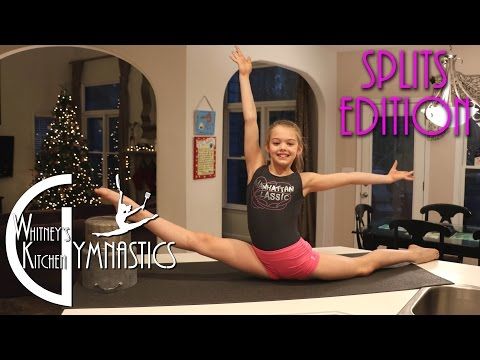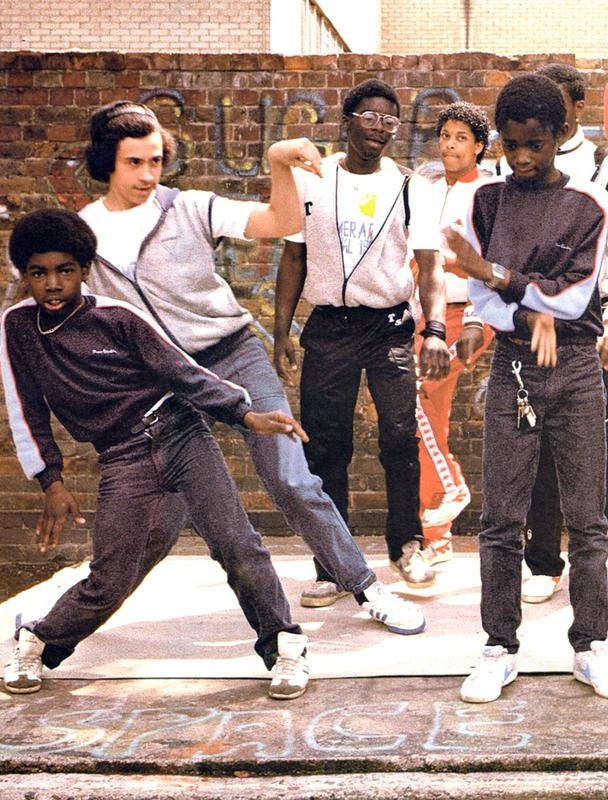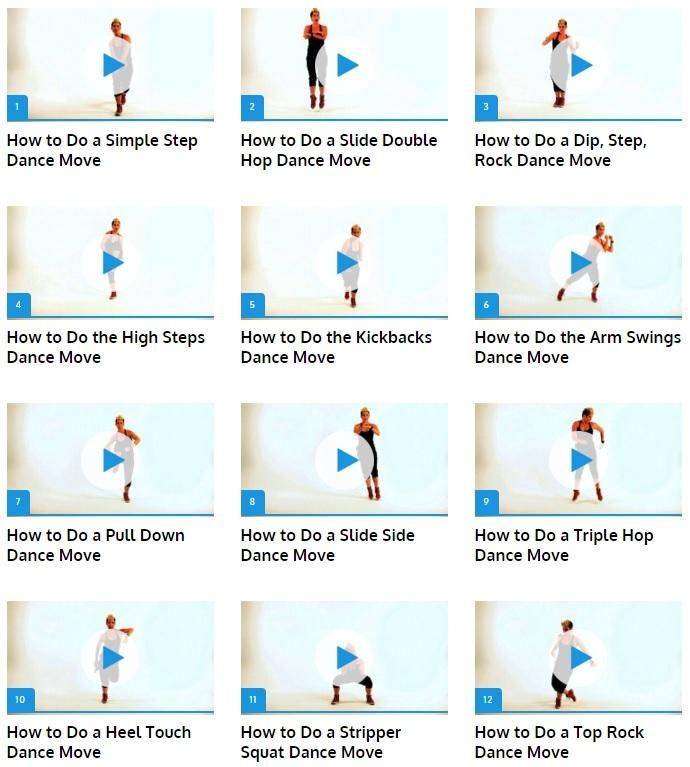How to dance foxtrot
Foxtrot Dance Steps
ETDS is a ballroom and latin tournamentPhoto by Anoko / Wikimedia
Foxtrot Basics
Foxtrot is a smooth dance, traveling around the line of dance. The long walking movements involve a subtle rise & fall action. Turning movements are similar to Waltz, but with a more moderate rise and fall, and more length-wise action.
International Foxtrot syllabus has only closed dance position but in American Foxtrot, both open and closed dance positions are allowed. The Foxtrot originally started with slow and quick steps but soon evolved to include twinkles and chasses.
The Foxtrot is danced to music written in 4/4 time with the first and third beats of each measure more heavily accented. It is danced in combinations of slow and quick steps, with each slow step taking two beats and each quick step one beat of music.
Therefore, a dance basic figure in slow, slow, quick, quick rhythm takes one and a half measures, while a dance figure in slow, quick, quick rhythm takes one measure.
Foxtrot is extremely versatile and can be danced to a variety of musical styles and tempi. Foxtrot music has a tempo of 29 to 34 measures per minute.
Foxtrot is danced in a closed ballroom dance position hold. In closed position, the man and lady stand in front of each other, slightly offset to the left.
The lady's right hand and man's left hand are joined in an upper-hand clasp at approximately the lady's shoulder level.
The man's right hand is placed on the lady's shoulder blade, with the lady's left arm resting on his right.
Foxtrot Basic Forward
How to Dance a Basic Forward Step
Rhythm - Slow, slow, quick, quick. Foxtrot music is 4/4 timing which means there are 4 beats to 1 bar of music. A slow is 2 beats and a quick is 1 beat.
Men
Men start facing line of dance. (Hint: Face slightly toward the right wall of the room, or you'll eventually hit the left wall.)
- Start with feet together and weight on right foot
- With left foot take 1 walking step forward (slow)
- Step forward with right foot (slow)
- Step sideways with left foot (quick)
- Close right foot to left foot (quick)
- You'll end with your weight on right foot, ready to 'rinse, repeat' with left foot.
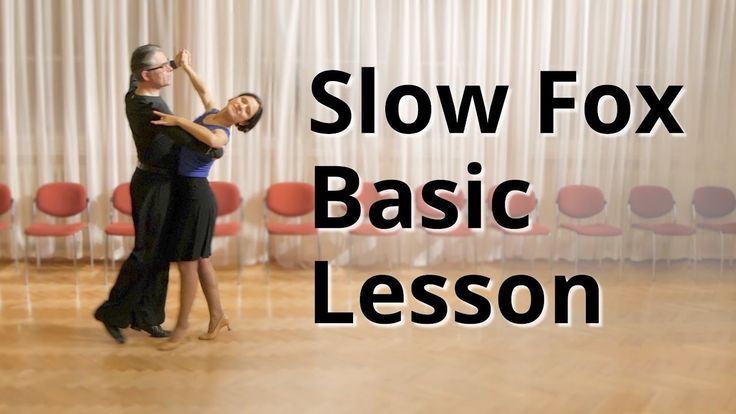
Man's foot position
Rhythm - Slow, slow, quick, quick.
Foxtrot Basic forwardStep diagram by Centralhome.com
Ladies
- Start with feet together and weight on left foot
- With right foot take 1 walking step backward (slow)
- Step back with left foot (slow)
- Step sideways with right foot (quick)
- Close left foot to right foot (quick)
- You'll end with your weight on left foot, ready to 'rinse, repeat' with right foot.
Foxtrot Basic Backward
Man's foot position
Start position
Foxtrot basic backward stepStep diagram by Centralhome.com
Rhythm - Slow, slow, quick, quick.
Foxtrot Rock Left Turn
Man's foot position
Foxtrot Rock left turnStep diagram by Centralhome.com
Rhythm - Slow, slow, quick, quick.
Foxtrot Forward progressive
Man's foot position
Foxtrot forward progressiveStep diagram by Centralhome.com
Rhythm - Slow, slow, quick, quick.
Foxtrot Promenade Step
Man's and lady's foot position
Foxtrot promenade stepsStep diagram by Centralhome.com
Start
Rhythm - Slow, slow, quick, quick
About the Author
Jake Fuller is a staff blogger for Centralhome.com.
Recommended for you
Foxtrot steps 2
History of Foxtrot
Foxtrot syllabus
Dance Terms and definitions
Dance Tips
Share
Next in Steps: Foxtrot Steps 2
Learn Basic Foxtrot Steps
Foxtrot is a smooth, elegant, easy to learn dance, very popular at wide variety of social events, including wedding receptions. It's one of the most beautiful ballroom dances characterized by long, flowing movements.
- Basic steps
- Instructions & Diagrams
- Video
- Recommended Video Lessons »
Quick intro
Foxtrot is named after its originator, Harry Fox, who was a Vaudeville performer in New York in the 1910s.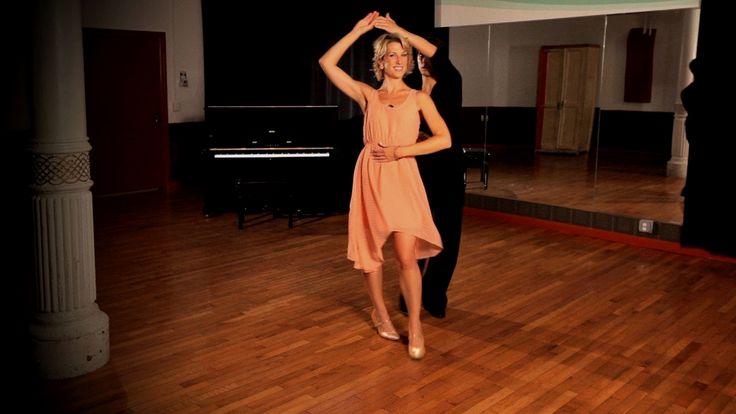 Because he was having a hard time finding female dancers capable of performing the difficult two-step, he added trotting steps to ragtime music. People soon referred to his dance as Fox's Trot.
Because he was having a hard time finding female dancers capable of performing the difficult two-step, he added trotting steps to ragtime music. People soon referred to his dance as Fox's Trot.
Foxtrot includes basic elements found in most other dances, so when you learn it you acquire a good foundation to learn other popular dance forms. It is highly versatile and can be danced to a variety of musical styles and tempos. From slow and romantic to quick and jazzy. Popular vocalists for foxtrot include Frank Sinatra, Bobby Darin, Billie Holiday, Nat King Cole, Ella Fitzgerald, Louis Armstrong, Dinah Shore, and many, many more.
Basic steps
The basic elements of foxtrot are walking steps and side steps. The long walking movements also involve a rise & fall action, which is similar to waltz, although more subtle. The basic box step is also similar to waltz steps – the main difference being timing (foxtrot is 4/4, waltz is 3/4). If you already know how to waltz, then learning foxtrot will be just a matter of rhythm.
If you already know how to waltz, then learning foxtrot will be just a matter of rhythm.
The basic rhythm is slow, slow, quick, quick. The slow steps use 2 beats of music and the quick steps use one. The slow steps are long and elegant, and the quick steps are short and energetic. As already mentioned, the music is played in 4/4 timing.
Foxtrot is danced in a normal closed position, which means facing your partner and holding them close.
Instructions & Diagrams:
Stand upright with your feet together. Face each other, lady puts her right hand in his left. His right hand is on her left shoulder blade, her left hand is on his right arm.
Basic Steps - Gentleman
Basic forward
- Step forward with your left foot (slow step)
- Step forward with your right foot (slow step)
- Sidestep to the left with your left foot (quick step)
- Move your right foot to your left foot (quick step)
Basic backward
- Step backward with your left foot (slow step)
- Step backward with your right foot (slow step)
- Sidestep to the left with your left foot (quick step)
- Move your right foot to your left foot (quick step)
Basic Steps – Lady
Basic forward
- Step backward with your right foot (slow step)
- Step backward with your left foot (slow step)
- Sidestep to the right with your right foot (quick step)
- Move your left foot to your right foot (quick step)
Basic backward
- Step forward with your right foot (slow step)
- Step forward with your left foot (slow step)
- Sidestep to the right with your right foot (quick step)
- Move your left foot to your right foot (quick step)
Video
In the following video Leon and Kim will show you the basic forward. You will also learn how to achieve smoothness in your movements:
You will also learn how to achieve smoothness in your movements:
more videos »
Now that you know basic forward, try doing basic backward. It's the same thing, only that you move... backwards (from the perspective of the leader). And then you can mix the two together.
Ok, so now that you've mastered the basic step, lets do something a bit different. In the next video (from Learn & Master Ballroom Dance) you will learn the Left Turning Box. Timing will change here to slow, quick, quick instead of the basic slow, slow, quick, quick.
Where to go next?
When you're ready for more, check out the recommended video lessons. With a good video training program, you can quickly rise to the next level.
Foxtrot - a dance that gives freedom
1
+1
0
| Free dancing
Free dance
Foxtrot: lightness, softness and freedom
Foxtrot is a wonderful and romantic pair dance, characterized by both freedom of movement and elegance, lightness, smoothness and softness. Today, the exact origin of the foxtrot is unknown, but according to one version, the appearance of this dance is associated with the name of Harry Fox, who at the beginning of the 20th century was a member of various vaudeville and shows.
When the New York theater was converted into the House of Cinema, a dance floor was built on its roof and there was a performance of "Jardin Danse". In this show, Harry Fox performed with the American Beauties dance group, performing a dance to ragtime music among other numbers. The audience especially liked the dancer's original steps, reminiscent of a trot.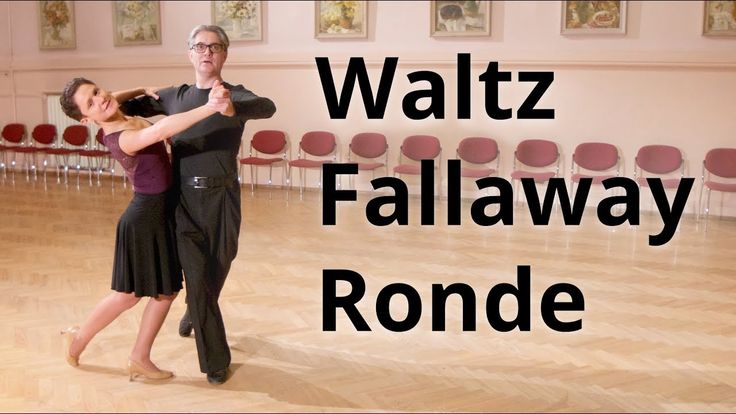 So the dance was named after its creator - "Fox's Trot".
So the dance was named after its creator - "Fox's Trot".
Foxtrot - temperamental dance
It is known that the foxtrot was originally a temperamental dance with kicks and jumps. But, having received wide distribution of the First World War, the dance has changed significantly. The American Morgan introduced an “open spin turn”, Frank Ford introduced a “heeled turn”, Anderson and Josephine Bradley introduced a “feather step” and a “change of direction”.
Today there are several varieties of the foxtrot. Fast foxtrot - quickstep - which is characterized by progressive turns and steps, jumps in advance and on the spot. In this dance, the influence of jazz rhythms and Charleston is noticeable. The slow foxtrot - slowfox - was standardized in the UK in the 1920s. It is based on a pronounced stretching of the sides, long lines, smooth, weightless steps. It seems that the slow foxtrot dancers are hovering over the parquet. And in the ballrooms for mass dances you can see the social foxtrot. True, in an unprofessional performance, the dance has lost its main feature - promotion.
True, in an unprofessional performance, the dance has lost its main feature - promotion.
Foxtrot: dancing with pleasure
Learning to dance the foxtrot is not easy, because it combines many different rhythmic combinations of steps and has a complex movement pattern. And yet it is worth spending time and energy on it, because dancing the foxtrot is a great pleasure. Foxtrot is a feeling of freedom. Perhaps this is the reason why he is such a prominent phenomenon in ballroom dancing.
foxtrot, dance, charleston
Share link
Blogs
- Featured posts
- All entries
- Site Mosaic
- Last comments
- All blogs
- Technical support
- Site statistics
- FAQ
Blog tags
Find a tag:
Follow @4dancing
4dancing
Small mosaic
large mosaic
Foxtrot. Dance technique SLOW FOXTROT for beginners
Dance - Foxtrot. Dance technique SLOW FOXTROT for beginners| HOUSE | MENU | DOKI | SEARCH |
Culture › Dance › European ›
see Recommended literature on dance. Symbols and abbreviations
(from the English foxtrot - fox step), American ballroom dance , however, having a distant relation to the fox, because it is named after the American actor Harry Fox, who invented this dance at 1914 g. His characteristic manner of movement was called Fox`s Trot.
In the beginning, the foxtrot was not a very restrained dance with many jumps and leg swings - after all, it was created for the variety show stage.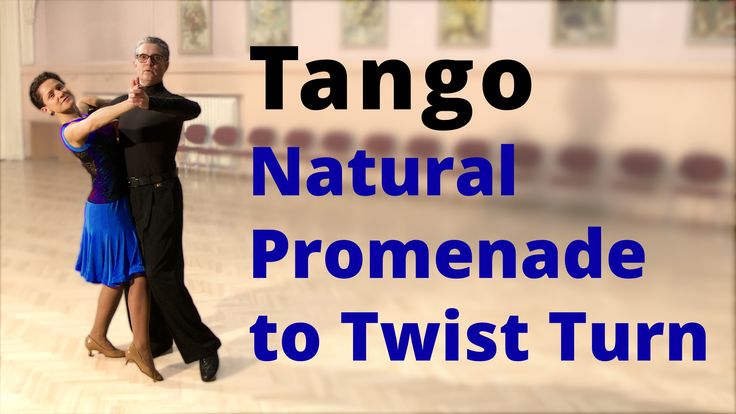 It was danced at a different pace - from 32 to 50 t/min. But when he got to England, he underwent a real reform and acquired two options: over fast (quick step) and over slow (slow fox).
It was danced at a different pace - from 32 to 50 t/min. But when he got to England, he underwent a real reform and acquired two options: over fast (quick step) and over slow (slow fox).
In the 1920s world champion Frank Ford refined the basic movements of the foxtrot. The foxtrot technique is somewhat reminiscent of a slow waltz, but the movements are performed in a completely different rhythm.
One of the features and difficulties of the foxtrot is that the end of many of its movements does not coincide with the end of the measure of the music, i.e. the movement often ends within the measure. In addition, the last step of the previous figure can simultaneously be the first step of the next one. The stride length will depend on the pace. The faster you move, the shorter the steps.
Slow Foxtrot
(or slow fox, from English slow fox), one of the forms foxtrot , music. size 4/4, rate 28-30 t/min. (112-120 bpm). Included in Western European program ballroom dancing . A dance of strict lines and at the same time allowing you to improvise, changing the combination of movements and their sequence. Foxtrot is a restrained and elegant dance.
It reached its popularity in the 40s. 20th century Melodies written by Frank Sinatra, Glen Miller and other musicians have become real classics. The steps of the dance are long, smooth, sliding. The performance of the slow foxtrot is considered quite difficult - the dancers are required to have good balance and constant control over each movement.
Fast Foxtrot
(or quick step, from the English. quick step - quick step), one of the forms foxtrot , music. size 4/4, rate 48-52 t/min. (192-208 bpm). Included in Western European program ballroom dancing . The most dynamic of the "standard" dances. He grew up from the foxtrot, which was danced in the American music hall. Once in England, the dance acquired two versions: faster (quick step) and slower (slow fox). The British upgraded the original charleston , providing it with characteristic foxtrot movements. The result was a dance of fast steps, which included both the main pas of the slow foxtrot and the fast figures brought in from outside .
size 4/4, rate 48-52 t/min. (192-208 bpm). Included in Western European program ballroom dancing . The most dynamic of the "standard" dances. He grew up from the foxtrot, which was danced in the American music hall. Once in England, the dance acquired two versions: faster (quick step) and slower (slow fox). The British upgraded the original charleston , providing it with characteristic foxtrot movements. The result was a dance of fast steps, which included both the main pas of the slow foxtrot and the fast figures brought in from outside .
Quick step is a mobile and impetuous dance. Here are light small jumps, and swift and energetic steps, and sudden stops with pauses. And all this is fun, carefree and harmonious. A fairly fast pace of the dance requires good command of all the figures and coherence in a pair.
SLOW FOXTROT dance technique for beginners
This dance is considered difficult because it requires good balance and constant control over every movement.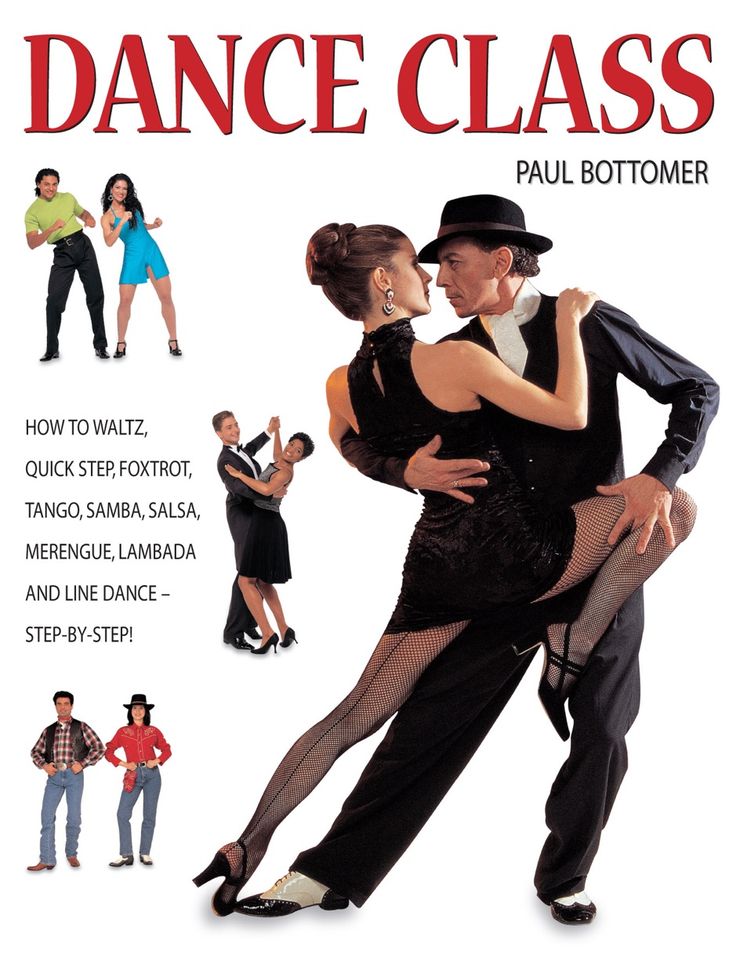 To perform it gracefully, the partner and especially the partner need a long training. Beginners usually prefer the blues, which is erroneously called the slow foxtrot. However, those who from the very beginning want to overcome all difficulties will get real pleasure moving around the dance floor in a foxtrot. Do not forget that the slow foxtrot requires a lot of space, and in a small and couple-filled area it should be abandoned.
To perform it gracefully, the partner and especially the partner need a long training. Beginners usually prefer the blues, which is erroneously called the slow foxtrot. However, those who from the very beginning want to overcome all difficulties will get real pleasure moving around the dance floor in a foxtrot. Do not forget that the slow foxtrot requires a lot of space, and in a small and couple-filled area it should be abandoned.
Size: 4/4. Tempo: 30 bars or 120 beats per minute.
Basic rhythm: slow, slow, fast, fast, slow; the first and third shares are accentuated; each slow count is equal to two beats, and each fast count is equal to one beat. Position: identical to the position of the quickstep.
1. Triple step
The march and triple step are the basis of the slow foxtrot. Each step of the march counts as "slow" - Two beats. The difficulty of the slow foxtrot is to follow the steps on the "fast" count without speeding up and not to drag too much on the "slow" count. The triple step starts facing along the line of dance and ends in the same direction.
The triple step starts facing along the line of dance and ends in the same direction.
For Partner:
1. Step right foot forward (quickly).
2. Step forward with the left foot, sliding along the right foot (quickly).
3. Step forward with the right foot, sliding along the left foot (slowly).
For Partner:
Performs opposite steps.
Fig. Triple step. The partner performs from the right foot forward, the partner from the left foot back
2. Pen pitch
The movement consists of a slow step and a triple step in which the partner walks on the side of the lady in the second fast step. This figure serves as a link.
For Partner:
Starts and ends the movement facing the line of dance diagonally to the wall or diagonally to the center.
1. Step right foot forward, turning the body slightly to the right (slowly).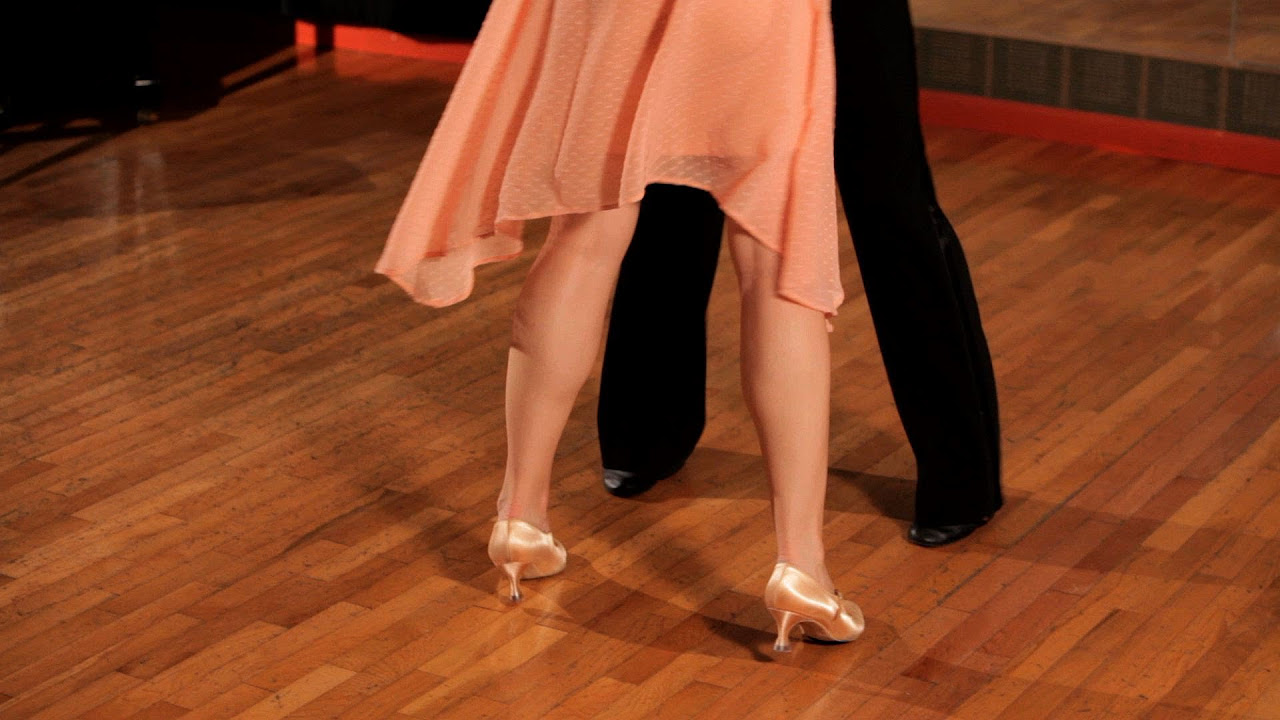
2. Step forward with the left foot, getting ready to walk at the lady's side; the left shoulder is leading (quickly).
3. Step forward with the right foot to the lady's side (quickly).
4. Step left foot forward in a closed position in line with the partner, body along the line of dance (slowly).
For Partner:
Performs opposite steps.
Move your feet following the movement of the “brush”.
MPC by 1, 4. MPCA by 3. Rise at the end 1, up by 2, 3. Decrease at the end 3. Tilt to the right by 2, 3. No turn, but there is a leading left shoulder by 2, 3. At the third step on the side of the partner, keep her straight in front of you and close so as not to lose contact {note. specialist. ed.).
Fig. Feather step. Pa of a partner and a partner who performs opposite steps without retreating from a partner
3. Visk
A slight change of direction makes the dance more enjoyable. This is achieved by using a classic whisk. The whisk can be combined with the feather step (see above), the last step of which is the first whisk step (slow, fast, fast).
This is achieved by using a classic whisk. The whisk can be combined with the feather step (see above), the last step of which is the first whisk step (slow, fast, fast).
For Partner:
Starts facing along the line of dance and ends facing diagonally to the wall in promenade position.
1. Step left foot forward along the line of dance (slowly).
2. Step with the right foot to the side, crossing the line of dance with the body turning slightly to the left; move the partner to the promenade position (quickly).
3. Cross the left leg loosely behind the right, keeping the promenade position facing diagonally to the wall (quickly).
MPC slightly by 1. Rise at the end of 1, up by 2, 3. Decrease at the end of 3. Tilt to the left by 2, 3.
Temple tie with a step "feather", starting with the right foot.
Fig. Visk. Pa partner and partner
For Partner:
Starts moving backwards along the line of dance and ends up facing diagonally to the center (new direction) in promenade position.
1. Step right foot back, back along the line of dance (slowly).
2. Step left foot back and to the side with a slight turn of the body to the right - promenade position (quickly).
3. Cross the right leg loosely behind the left, keeping the promenade position, facing diagonally to the center (new line of dance - fast).
In order to link the temple with the “feather” step, the partner takes the starting position with her back along the line of dance on the first quick count of the “feather” step.
Advanced SLOW FOXTROT dance technique
The dance is distinguished by the length of the steps, which require ease of movement and perfect balance. Variations of the slow foxtrot are possible only on a large venue, so on small venues they are replaced with quickstep steps, dancing more slowly.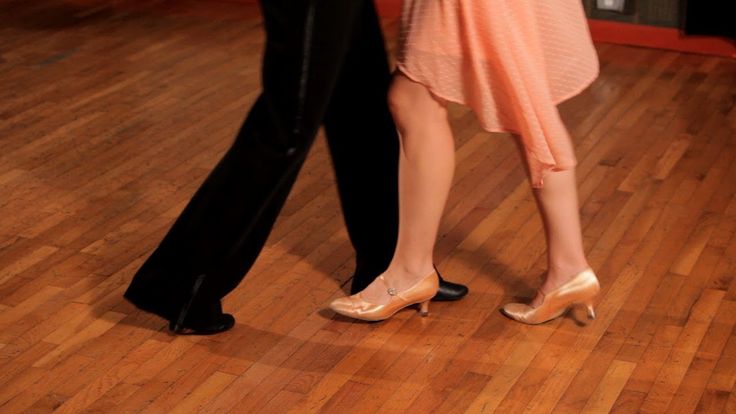 However, even on a small dance floor, an experienced dancer will be able to use a few suitable moves, provided that there are few dancers and the partner dances well.
However, even on a small dance floor, an experienced dancer will be able to use a few suitable moves, provided that there are few dancers and the partner dances well.
Basic foxtrot figures: triple step, feather step, right and left turns, impetus turn, telemark. Among the standardized variations are: telemark to the right, “hovering” (hover) telemark to the right, right spin-turn, top spin.
It is very important for beginners to correctly execute the triple step. In order to dance the slow foxtrot with ease and grace, even trained dancers need to master a few preparatory exercises. Preliminary preparation is especially necessary for the partner. This applies, for example, to a step back, which is unusual and therefore very difficult to perform. First of all, we give an exercise for walking without music, and then with musical accompaniment. You should start straight along the line of dance, without turning.
For Partner:
1. Step right foot forward (slowly).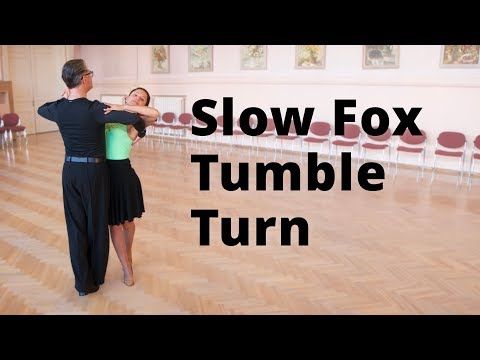
2. Step left foot forward (slowly).
3. Triple step - right, left, right foot (fast, fast, slow).
4. Step left foot forward (slowly).
5. Step right foot forward (slowly).
6. Triple step - left, right, left foot (fast, fast, slow).
Performing the triple step of p. 3 and p. 6, rising at the end of the first step, up on the second, lowering at the end of the second step {note. specialist. ed.).
Repeat as desired.
For Partner:
1. Step back with the left foot (slowly).
2. Step right foot back (slowly).
3. Triple step - left, right, left foot (fast, fast, slow).
4. Step right foot back (slowly).
5. Step back with the left foot (slowly).
6. Triple step - right, left, right foot (fast, fast, slow).
When stepping back, the heel must be in contact with the floor.
Repeat as desired.
In links, each figure's own rhythm overlaps, and often the last step of one becomes the first step of another.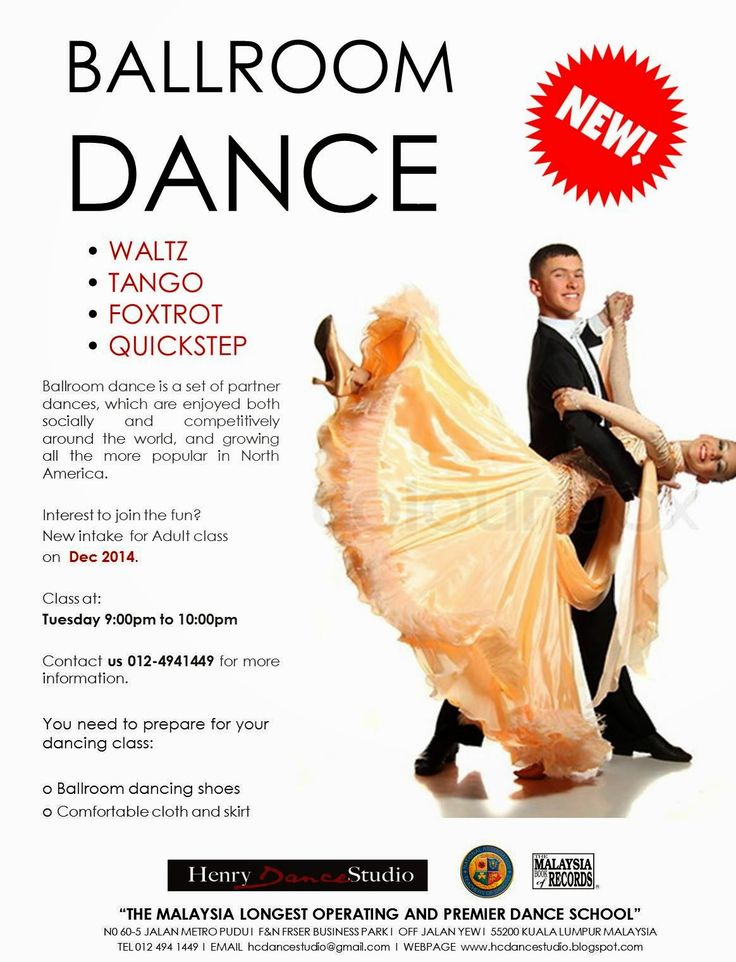 Ultimately, this is what distinguishes a good dancer: his slow should be seamless, pleasant for both the performer and the audience, causing them to associate with figure skating. Here are examples of links.
Ultimately, this is what distinguishes a good dancer: his slow should be seamless, pleasant for both the performer and the audience, causing them to associate with figure skating. Here are examples of links.
Rhythm of separate figures
Feather step: slow, fast, fast, slow. Triple step: fast, fast, slow. Right turn: slow, fast, fast, slow, slow.
Therefore, the last step of the triple step becomes the first step of the right turn.
1. Right turn
The movement can be performed at the corner of the court or moving along its edge.
For Partner:
Starts to move facing in line of dance or diagonal to wall; ends facing diagonally to the center or in the direction of the new line of dance.
1. Step forward with the right foot turning the body to the right (slowly).
2. Step left foot to the side to the left, crossing the line of dance (quickly).
3. Continuing to turn on the ball of the left foot, step back with the right foot, back along the line of dance (quickly).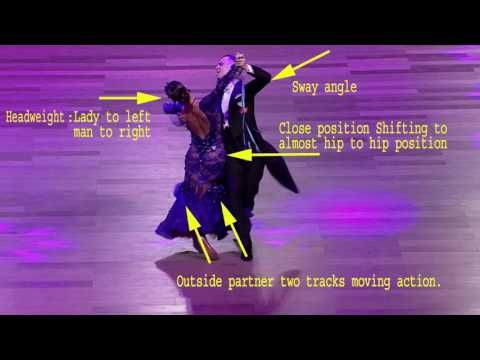
4. Step with the left foot back along the line of dance with the body turning to the right (slowly).
5. Take the right foot back (with pressure on it), continuing to turn on the left heel. Finishing the movement, put the right foot parallel to the left at a distance of about 15 cm; body weight on the right leg (slowly).
6. Step forward with the left foot turning the body to the left (slowly).
Continue the impetus turn after point 3 of the right turn
or "flying" telemark after point 5.
For Partner:
1. Step back with the left foot turning the body to the right (slowly).
2. Putting the right foot to the left, continue turning on the left heel to the right - heel turn; finish the movement of the face along the line of dance, body weight on the right leg (quickly).
3. Step left foot forward (quickly).
4. Step right foot forward along the line of dance with the body turning to the right (slowly).
5. Step left foot to the side to the left, crossing the line of dance (slowly).
6. With the movement of the “brush” (brush), move the right foot past the left and take a step back with it, turning the body to the left (slowly).
Fig. Right turn. Pa partner and partner
This figure is difficult for the partner, as it involves a turn on the heels and a brush on the feet. On paragraph 4, the partner should relax her right knee well and perform paragraph 5 slowly. At point 6, the knees should be relaxed and the “brush” movement should be performed with the plane of the right foot sliding along the left.
MPC by 1, 4, 6. Rise at the end of 1, top by 2, 3. Decrease at the end of 3. Tilt to the left by 2, 3, to the right - by 5 (for the partner), for the partner - vice versa. 1/2 turn for 1-3, 3/8 turn between 4-6. On the third step (for the partner), the hips are directed forward.
2. Rapid turn (impetus turn)
This very popular quickstep figure is often used in other dances. It can be performed at the corner of the site or moving along it. The figure is executed after the first three movements of the right turn, followed by the last part of the left turn.
It can be performed at the corner of the site or moving along it. The figure is executed after the first three movements of the right turn, followed by the last part of the left turn.
For Partner:
Starts moving with the back along the line of dance and ends with the back diagonally to the center.
1.2.3. right turn (slow, fast, fast). Then back along the dance line:
1. Step with the left foot back along the line of dance with the body turning to the right (slowly).
2. Bring the right foot to the left, turning on the left heel, body weight on the right foot (quickly).
3. Continuing to turn on the ball of the right foot, take a step with the left foot to the side to the left and slightly back (quickly).
4. Step right foot back diagonally to the center with the body turning to the left (slowly).
Continue points 5, 6, 7 of the left turn. Finish diagonally to the center or, if the movement is performed on a corner, diagonally to the wall - a new line of dance (fast, fast, slow).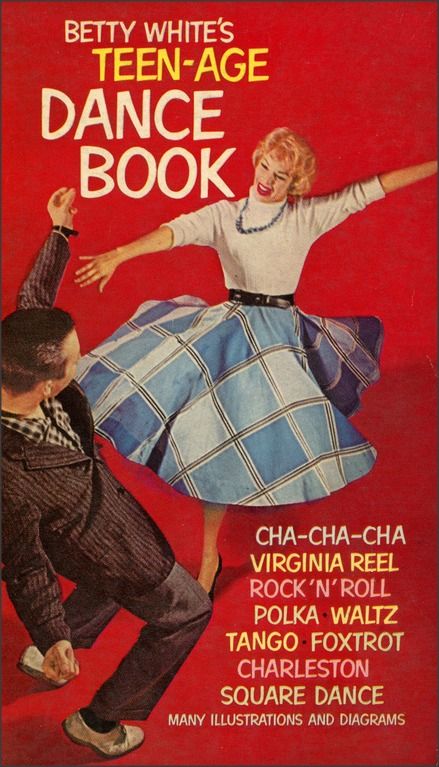
For Partner:
1. Step right foot forward along the line of dance with the body turning to the right (slowly).
Fig. Impetus-turn. Pa partner and partner
2. Step left foot to the side to the left, crossing the line of dance (quickly).
3. Continuing to turn on the ball of the left foot, brush with the feet and take a small step forward diagonally towards the center with the right foot (slowly).
4. Step left foot forward diagonally to the center, turning to the left (slowly).
Continue steps 5, 6, 7 of the left turn (fast, fast, slow).
MPC by 1, 4. Rise at the end of 2, top by 3. Decrease at the end 3. Tilt of the partner to the left, of the lady to the right by 2. Perform 3/8 turn to the right on the first two steps, another 1/4 turn between 2 , 3. Then 1/4 turn to the left between steps 4-7.
3. Telemark
This variation is more commonly used in small venues and can replace a reverse turn.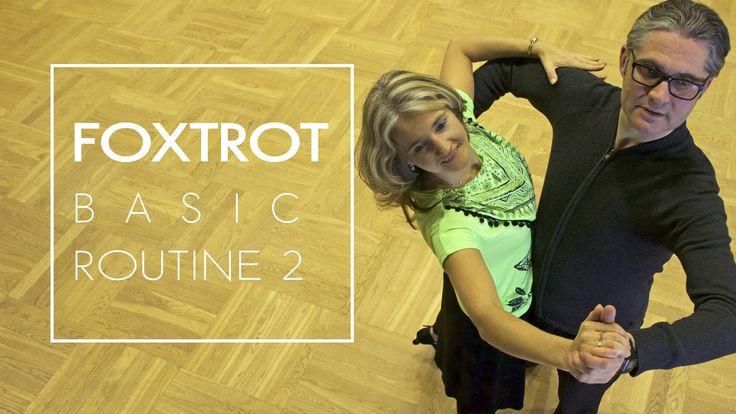 It is usually preceded and followed by a "feather" step that starts on the partner's side.
It is usually preceded and followed by a "feather" step that starts on the partner's side.
For Partner:
Starts moving diagonally towards the center and ends diagonally towards the wall.
1. Step forward with the left foot turning the body to the left (slowly).
2. Step right foot to the side to the right, crossing the line of dance (quickly).
3. Continuing to turn on the ball of your right foot, take a step with your left foot to the side to the left and slightly forward, ending with your face diagonally to the wall (quickly).
4. Step right foot forward facing diagonally to the partner's side wall (slowly).
Finish the movement by performing steps 2, 3, 4 of the “feather” step facing diagonally to the wall (fast, fast, slow).
For Partner:
1. Step right foot back with body turning to the left (slowly).
Fig. Telemark. Pa partner and partner
2. Bring the left foot to the right, turning on the right heel; finish facing along the line of dance, transferring body weight to the left leg (quickly).
Bring the left foot to the right, turning on the right heel; finish facing along the line of dance, transferring body weight to the left leg (quickly).
3. Continuing to turn on the ball of the left foot, take a step with the right foot to the side to the right and slightly back, ending with the back diagonally to the wall (quickly).
4. Step left foot back diagonally to the wall, partner on the side (slowly).
Finish the movement by performing steps 2, 3, 4 of the “feather” step with your back diagonally to the wall (fast, fast, slow).
MPC for 1, 4. The fourth step in the MPC. Rise at the end 1, up by 2, 3. Decrease at the end 3. Tilt the partner to the left, the lady to the right by 2, 3. Perform 3/4 turn between 1-4, the body turns a little less. For the partner, the third step should be long so as not to move away from the partner.
4. Open telemark ending with pen step
In the telemark variation, the third and fourth steps are performed in promenade position.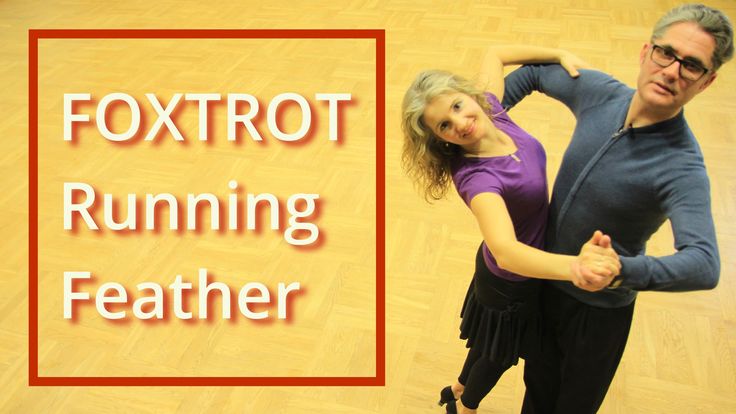 Usually this figure is preceded by a "feather" step diagonally to the center, and ends also with a "feather" step, but diagonally to the wall. Lady performs a quarter turn left to point 5 to be directly in front of her partner.
Usually this figure is preceded by a "feather" step diagonally to the center, and ends also with a "feather" step, but diagonally to the wall. Lady performs a quarter turn left to point 5 to be directly in front of her partner.
For Partner:
Starts moving diagonally towards the center and ends diagonally towards the wall.
1. Step forward with the left foot turning the body to the left (slowly).
2. Step right foot to the side to the right, crossing the line of dance (quickly).
3. Continuing to turn on the ball of your right foot, take a step with your left foot to the side to the left and slightly forward - in the promenade position (quickly).
4. Step right foot forward into a promenade position diagonally to the wall (slowly).
Fig. An open telemark ending with a “pen. Pa partner and partner
5. Having turned the lady around a quarter of a turn, take a step with the left foot forward diagonally to the wall (quickly).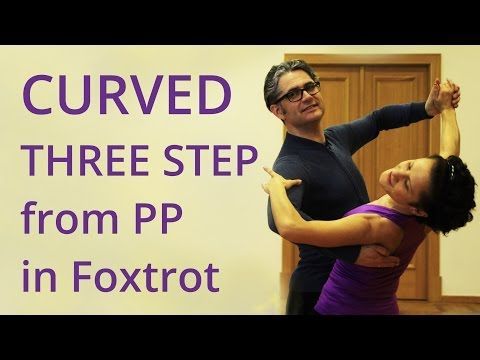
6. Step forward with the right foot to the lady's side (quickly).
7. Step forward with the left foot in line with the partner diagonally to the wall (slowly).
PDK for 1, 4, 7. The fourth and sixth steps in PDK. Climb at end 1, up at 2, 3. Descent at end 3. Rise at end 4, up at 5, 6. Descent at end 6. Lean left at 2, right at 5, 6. Perform a 3/4 turn at 1-3 and a slight turn of the body to the left at the end of the "pen" step.
For Partner:
1. Step right foot back with body turning to the left (slowly).
2. Bring the left foot to the right, turning on the right heel, finish with the face along the line of dance (quickly).
3. Step right foot diagonally forward in promenade position, right shoulder leading; the toe of the right foot is pointing along the line of dance (quickly).
4. Step left foot forward, "crossing" the body, in the promenade position, start turning to the left (slowly).
5. Turn to the left until you are directly in front of your partner, step with your right foot to the side to the right and slightly back (quickly).
Turn to the left until you are directly in front of your partner, step with your right foot to the side to the right and slightly back (quickly).
6. Step left foot back (partner on the side) diagonally to the wall (quickly).
7. Step right foot back (slowly).
PDK for 1, 4, 7. The fourth and sixth steps in PDK. Rise at end 1, up 2, 3. Descent at end 3. Rise at end 4, up 5, 6. Descent at end 6. Tilt right 2, left 5, 6. Perform 3/8 turn on steps 1, 2. Slight turn of the body to the left on the third step. 3/8 turn left in steps 4-7.
5. Top spin
The literal translation of this pa ("turn at the top") well reflects the essence of the movement - in a spiral. This variation is not only very enjoyable to dance, but also useful when the partner wants to avoid running into another couple. It consists of two turning steps back, which are performed after stopping the step forward with the right foot on the side of the partner. The top spin description below allows you to dance it in the corner of the dance floor. Usually this variation is preceded by points 1, 2, 3 of the impetus turn (slow, fast, fast) and 4, 5, 6 of the reverse turn (slow, fast, fast).
The top spin description below allows you to dance it in the corner of the dance floor. Usually this variation is preceded by points 1, 2, 3 of the impetus turn (slow, fast, fast) and 4, 5, 6 of the reverse turn (slow, fast, fast).
For Partner:
Starts in the corner of the court by following steps 1-6 as above. Finishes on the partner's side (on the toes), the right leg is in front, the body is diagonal to the wall - the direction is the same. Then:
1. Step with the left foot behind the right, turning to the left, partner on the side (quickly).
2. Step right foot back diagonally to the wall with the body turning to the left (quickly).
The following three movements are identical to points 5, 6, 7 of the reverse turn:
3. Step with the left foot to the side to the left and slightly forward, the body along the new line of dance (quickly).
4. Step with the right foot forward diagonally to the center on the partner's side (quickly).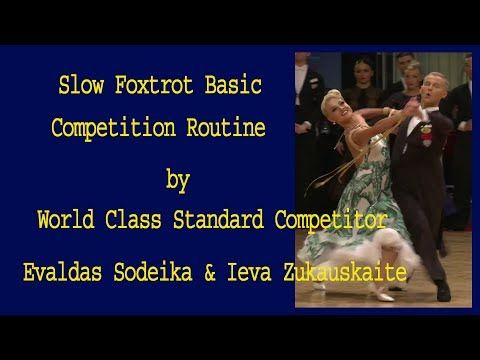
5. Step forward with the left foot in line with the partner diagonally to the center along the new line of dance (slowly).
PDK for 2, 5. Steps 1, 4 in PDK. Top 1-4. Decline at the end 4. Lean right 3, 4. Perform 1/8 turn between the sixth step of the reverse turn and the first step of the top spin; 1/8 turn between 1st and 2nd step; 1/4 turn between 2-5.
For Partner:
Starts in the corner of the dance floor by performing steps 1-6 as above: fast turn and steps 4, 5, 6 left turn. Finishes on the partner's left leg.
1. Turn the body to the left, take a step with the right foot forward to the left, "crossing" the left foot - on the side of the partner (quickly).
2. Step forward with the left foot against the line of dance, allowing yourself to turn to the left (quickly).
The following three movements are identical to points 5, 6, 7 of the reverse turn:
3. Step with the right foot to the side to the right with the back along the new line of dance (quickly).
4. Step left foot back diagonally to the center along the new line of dance, partner on the side (quickly).
5. Step right foot back in line with partner diagonally to center (slowly).
Fig. Top spin. Pa partner and partner
MPC by 2, 5. Fourth and sixth steps in the CAPD, top by 1-4. Decline at end 4. Tilt left 3, 4. Perform 1/8 turn between 2-3 steps and 1/8 turn between 3-4 steps.
Links and Variations
1. Triple step - step "feather" - temple - final step "feather". Repeat.
2. Feather step - triple step - right turn.
3. The first three steps of the right turn - impetus turn - points 4, 5, 6, 7 of the reverse turn; finish diagonally towards the center and link to a move to the left, such as a telemark.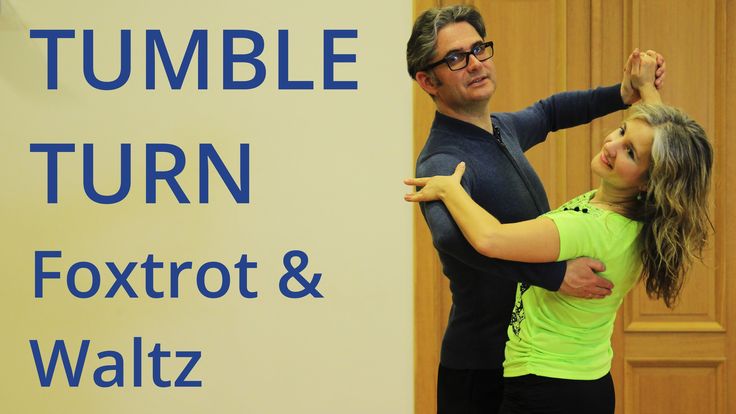
4. Step "feather" - telemark - final step "feather".
5. Step "feather" - open telemark - wing - telemark - final step "feather".
6. Points 1-3 of the right turn - impetus turn - points 4, 5, 6 of the reverse turn - top spin - triple step.
Video provided by Alexei Zhestkov's ballroom dance school
Ballroom dancing in the Kremlin! New set. Personal coaching advice. Friendly atmosphere
<< Back: Ballroom dancing
Maria Vasilevskaya "Dancing from A to Z" A book about dances for a wide range of readers
| We recommend that you look at the popular sections of the site myvaleology.com: | ||||||
| Version all4-8 | ||||||
Copyright © VZOJ 2022. All rights reserved. When reprinting or citing materials from myvaleology.




